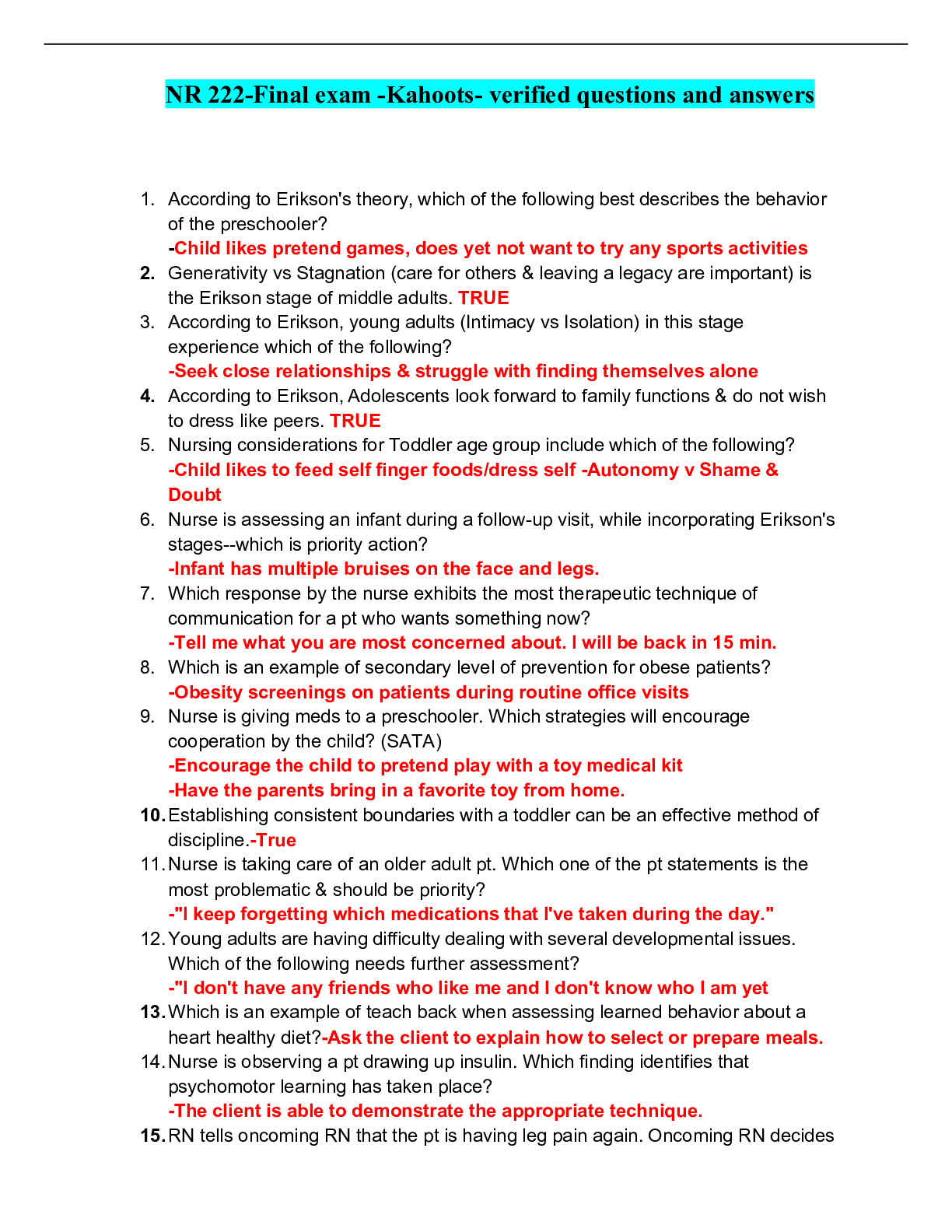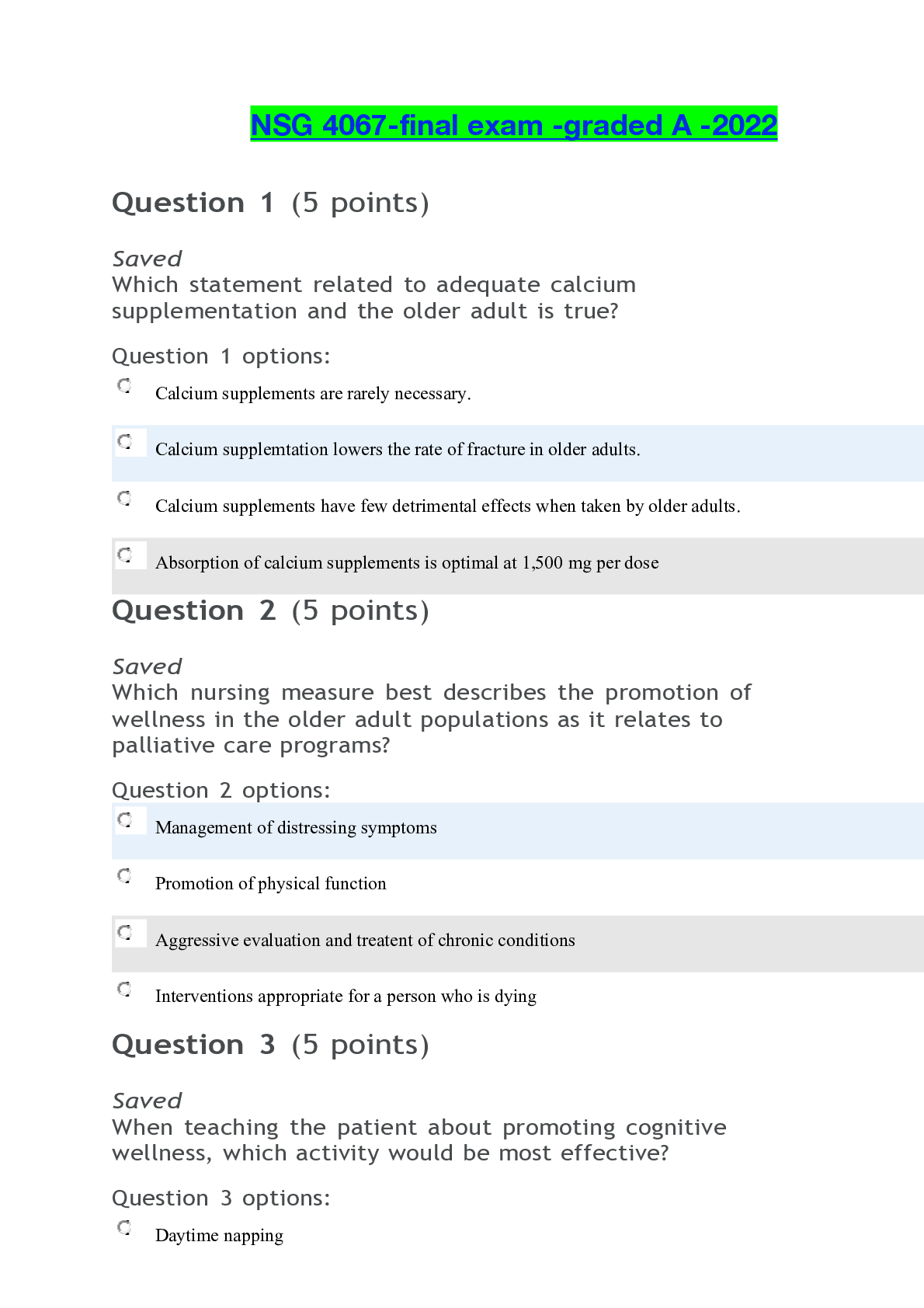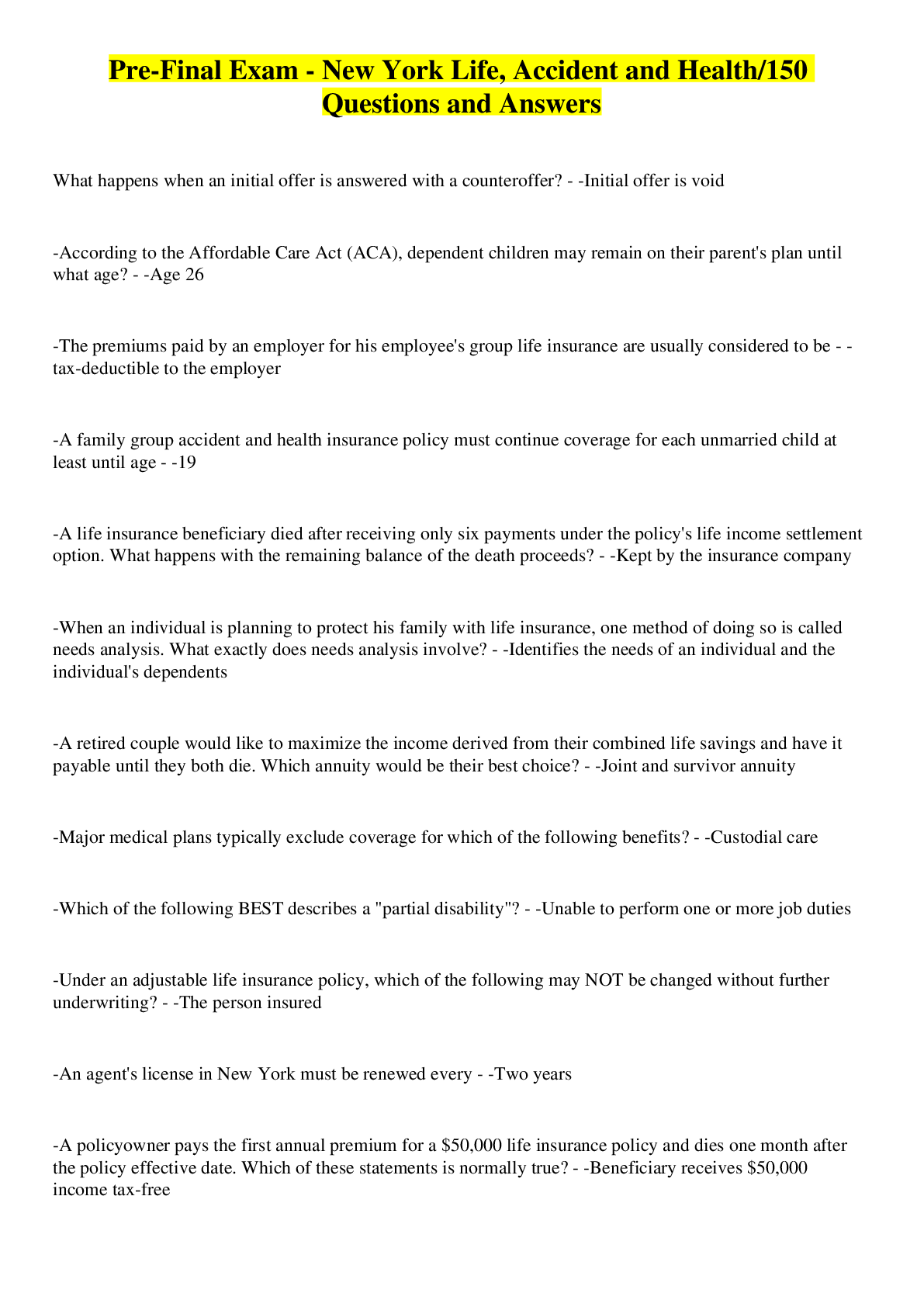NSG 6020 -Final exam - Test Bank.,WITH 100% CORRECT ANSWERS.
Document Content and Description Below
NSG 6020 -Final exam - Test Bank /NSG 6020 -Final exam - Test Bank. A 65-year-old patient remarks that she just can’t believe that her breasts sag so much. She states it must be from lack of exercis... e. What explanation should the nurse offer her? After menopause, the glandular and fat tissue atrophies, causing breast size and elasticity to diminish, resulting in breasts that sag. The mother of a 10-year-old boy asks the nurse to discuss the recognition of puberty. The nurse should reply by saying: “Puberty usually begins about age fifteen.” “The first sign of puberty is enlargement of the testes.” “Penis size does not increase until about the age of sixteen.” "The development of pubic hair precedes testicular or penis enlargement.” A patient has bilateral pitting edema of the feet. While assessing the peripheral vascular system, the nurse's primary focus should be: The correct answer is: Venous function of the lower extremities During an examination, the nurse notes severe nystagmus in both eyes of a patient. Which of the following conclusions is correct? 1.This is a normal occurrence. 2.This may indicate disease of the cerebellum or brainstem. 3.This is a sign that the patient is nervous about the examination. 4.This indicates a visual problem and a referral to an ophthalmologist is indicated. End-point nystagmus at an extreme lateral gaze occurs normally. Assess any other nystagmus carefully. Severe nystagmus occurs with disease of the vestibular system, cerebellum, or brainstem. When performing a musculoskeletal assessment, the nurse knows the correct approach for the examination should be: proximal to distal A 43-year-old woman is at the clinic for a routine examination. She reports that she has had a breast lump in her right breast for years. Recently, it has begun to change in consistency and is becoming harder. She reports that 5 years ago her physician evaluated the lump and determined that it “was nothing to worry about.” The examination validates the presence of a mass in the right upper outer quadrant at 1 o’clock, approximately 5 cm from the nipple. It is firm, mobile, nontender, with borders that are not well defined. The nurse’s recommendation to her is: “Because of the change in consistency of the lump, it should be further evaluated by a physician.” The nurse practitioner is examining a 3-month-old infant. While holding the thumbs on the infant's inner–mid-thighs and the fingers outside on the hips, touching the greater trochanter, the nurse practitioner adducts the legs until the nurse practitioner's thumbs touch and then abducts the legs until the infant's knees touch the table. The nurse practitioner does not note any "clunking" sounds and is confident to record a: Negative Ortolani's sign. A patient's mother has noticed that her son, who has been to a new babysitter, has some blisters and scabs on his face and buttocks. On examination, the nurse notices moist, thin-roofed vesicles with a thin erythematous base and suspects: Impetigo The nurse is testing superficial reflexes on an adult patient. When stroking up the lateral side of the sole and across the ball of the foot, the nurse notices the plantar flexion of the toes. How would the nurse document this finding? 1.Positive Babinski sign 2.Plantar reflex abnormal 3.Plantar reflex present 4.Plantar reflex “2 ” on a scale from “0 to 4 ” With the same instrument, draw a light stroke up the lateral side of the sole of the foot and across the ball of the foot, like an upside-down “J.” The normal response is plantar flexion of the toes and sometimes of the whole foot. A woman is in the family planning clinic seeking birth control information. She states that her breasts “change all month long” and that she is worried that this is unusual. What is the nurse’s best response? Tell her that, because of the changing hormones during the monthly menstrual cycle, cyclic breast changes are common. A patient states during the interview that she noticed a new breast lump in the shower a few days ago. It was on her left breast near her axilla. The RN should plan to: palpate the unaffected breast first A 16-yr-old girl is being seen at clinic for gastrointestinal complaints weight loss. Nurse determines that many of her complaints may be related to erratic eating patterns, eating predominantly fast foods, high caffeine intake. In this situation, which is most appropriate when collecting current dietary intake information? •1. Schedule a time for direct observation of the adolescent during meals. •2. Ask the patient for a 24-hour diet recall and assume this is reflective of a [Show More]
Last updated: 2 years ago
Preview 1 out of 19 pages
.png)
Buy this document to get the full access instantly
Instant Download Access after purchase
Buy NowInstant download
We Accept:

Reviews( 0 )
$22.00
Can't find what you want? Try our AI powered Search
Document information
Connected school, study & course
About the document
Uploaded On
May 04, 2021
Number of pages
19
Written in
Additional information
This document has been written for:
Uploaded
May 04, 2021
Downloads
0
Views
44
























